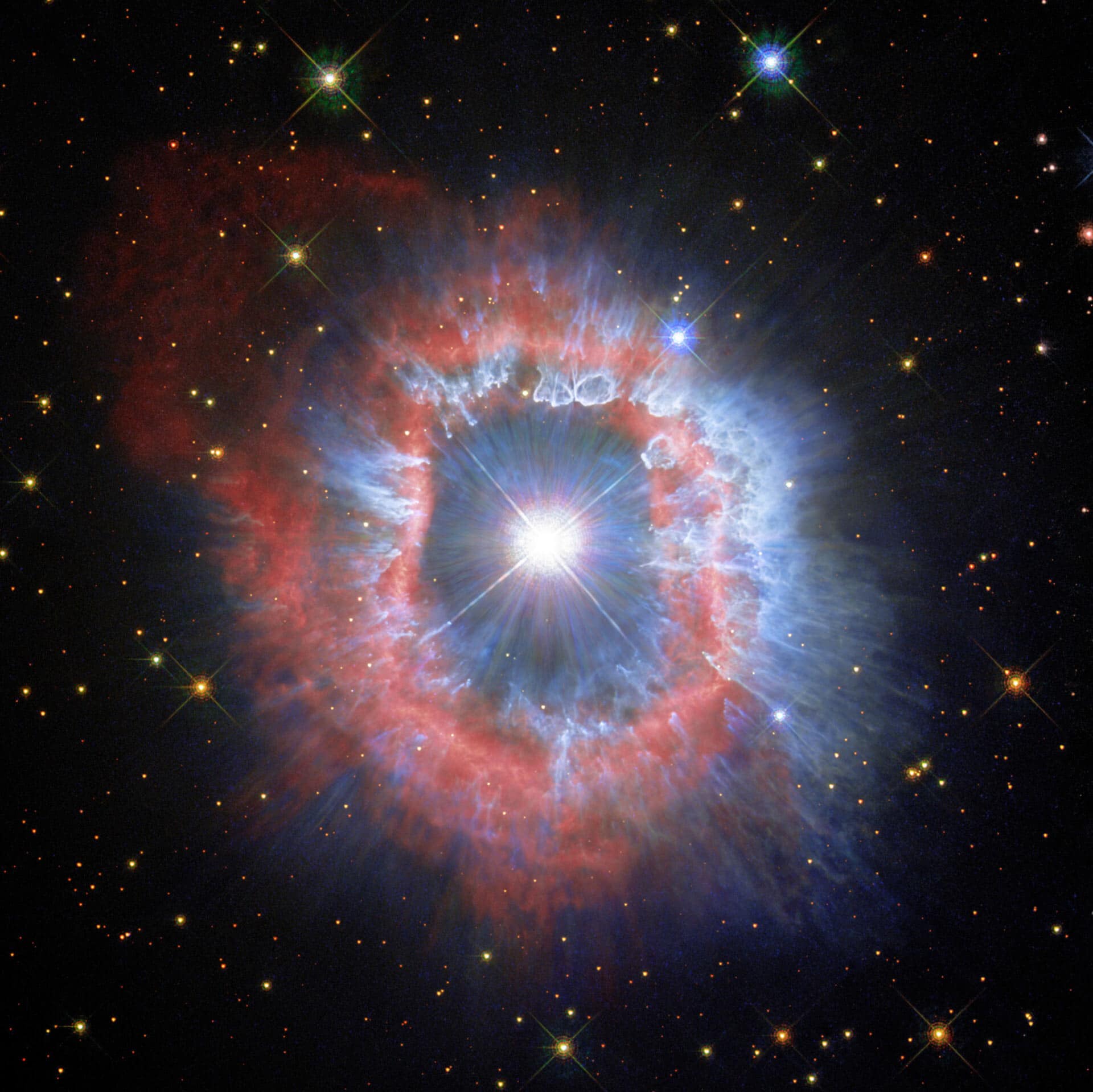

Traditionally, we close the year with a list of the most beautiful space photos. What were the most beautiful space photos of this year? More than 900 visitors chose the following ten photos.
In this article we count back from number 10 to number 1. The higher placed photos have received better reviews from visitors and are therefore higher in the list.
Just off the list: Spiral Galaxy NGC 1317
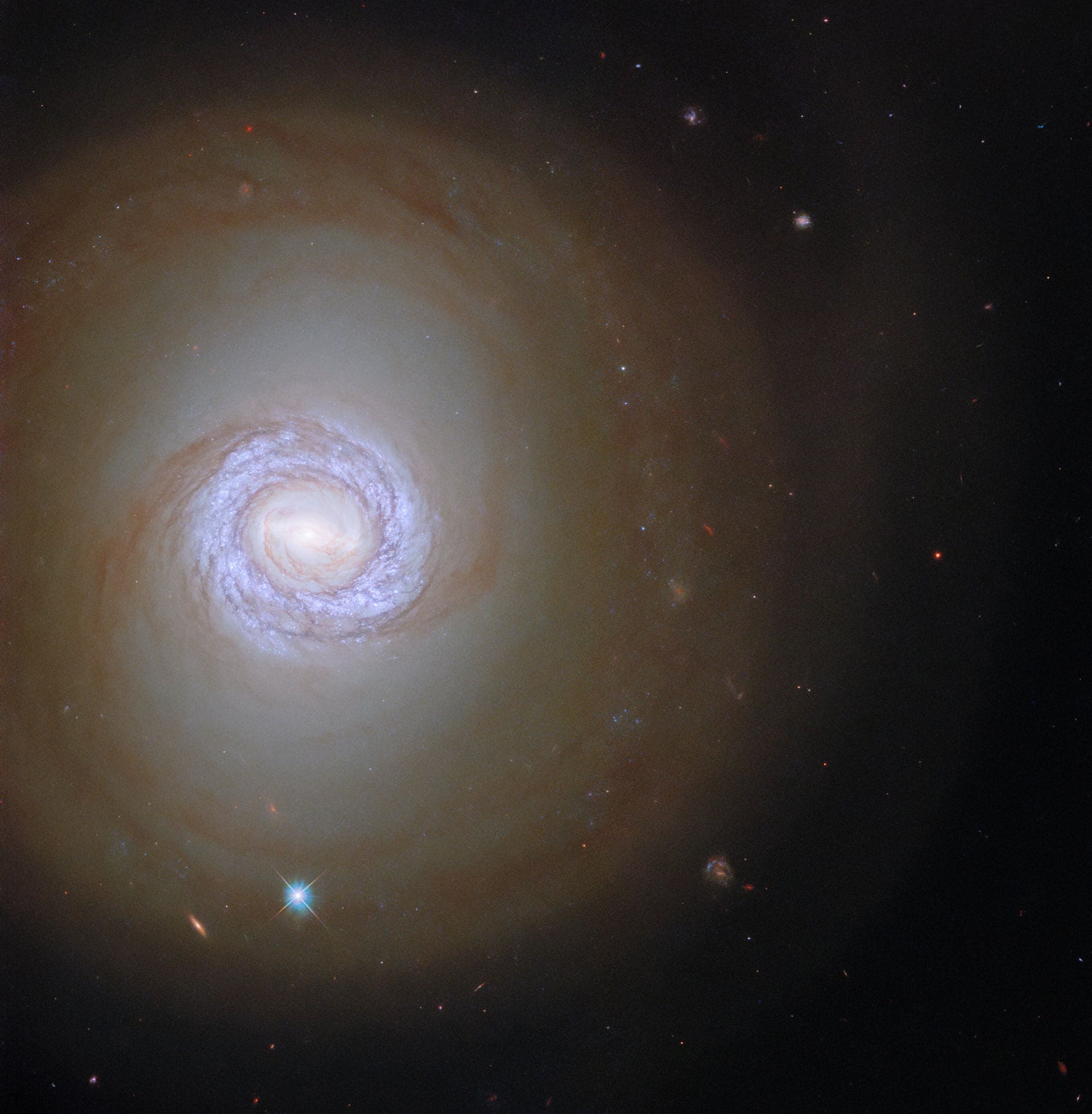
NGC 1317 is a small spiral galaxy located 55 million light-years from Earth. This galaxy is right next to “bigger brother” NGC 1316. NGC 1316 swallowed a spiral galaxy three billion years ago. NGC 1316 and NGC 1317 are members of a club called “The Local Group”, which also includes the Milky Way. The photo was taken by the Hubble Space Telescope. NGC 1317 finished just outside the top 10.
#10 Globular cluster NGC 6397
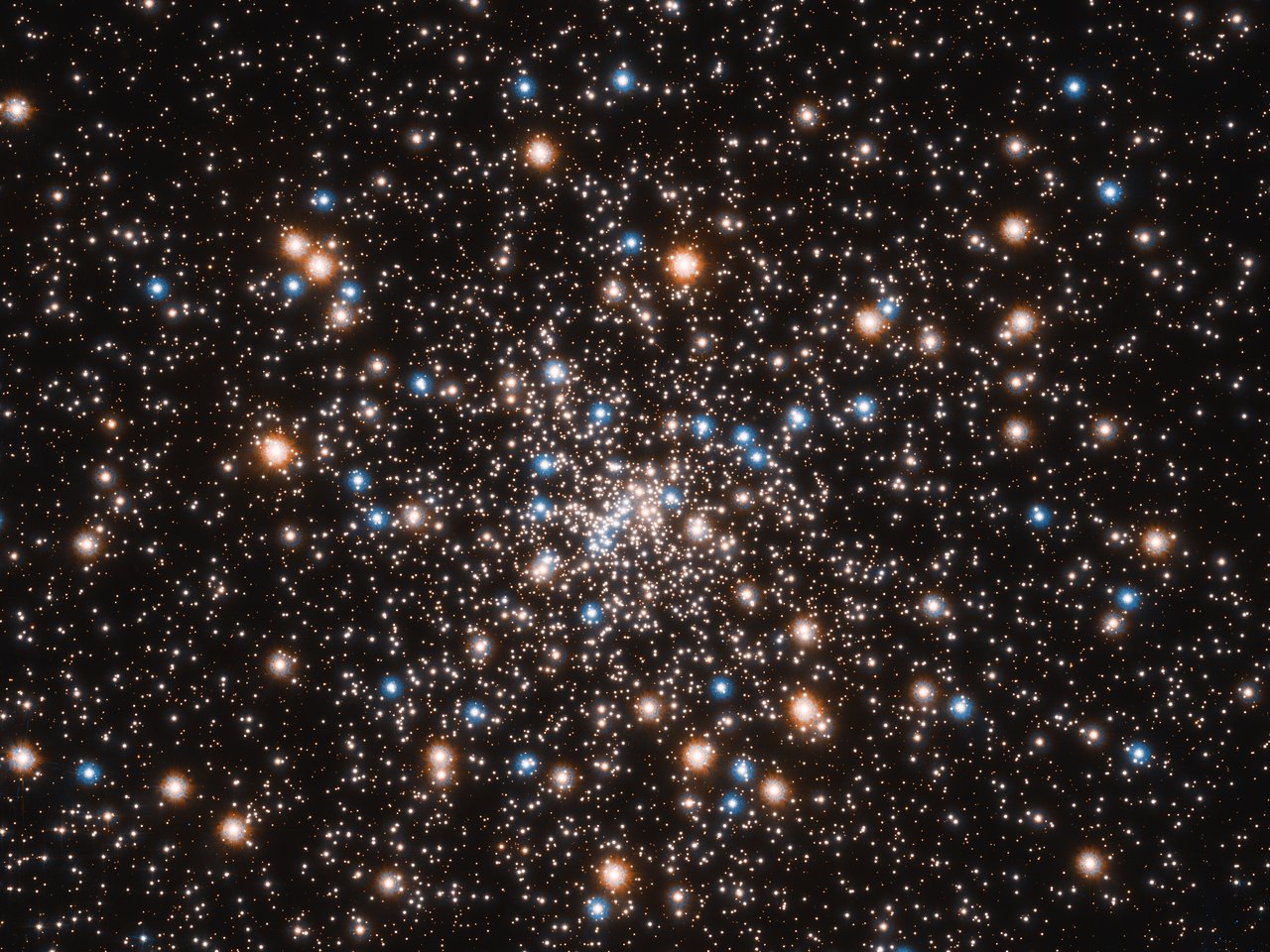
The Hubble Space Telescope made a beautiful picture of these cosmic jewels. Here we see the globular cluster NGC 6397 at a distance of 7,800 light-years from Earth. The blue stars are nearing the end of their lives. They have burned up all the hydrogen and are now burning their helium supply. Helium fuses at higher temperatures, making the stars look blue. The red stars are supergiant stars, while the small white stars are sun-like stars.
#9 Solar eclipse in the Netherlands

This year there was a solar eclipse in the Benelux. On June 10, the moon partially passed in front of the sun, obscuring part of the sun. Dutch and Belgians with eclipse glasses saw a bite taken from the sun. René Bremer captured this unique event and at the same time photographed an aircraft, namely a Boeing 787-10 Dreamliner. This concerns flight UA90 from New York to Tel Aviv. A beautiful photo, which you put in 9th place in the final list. See more photos of the solar eclipse on Scientias.nl.
#8 NGC 4254
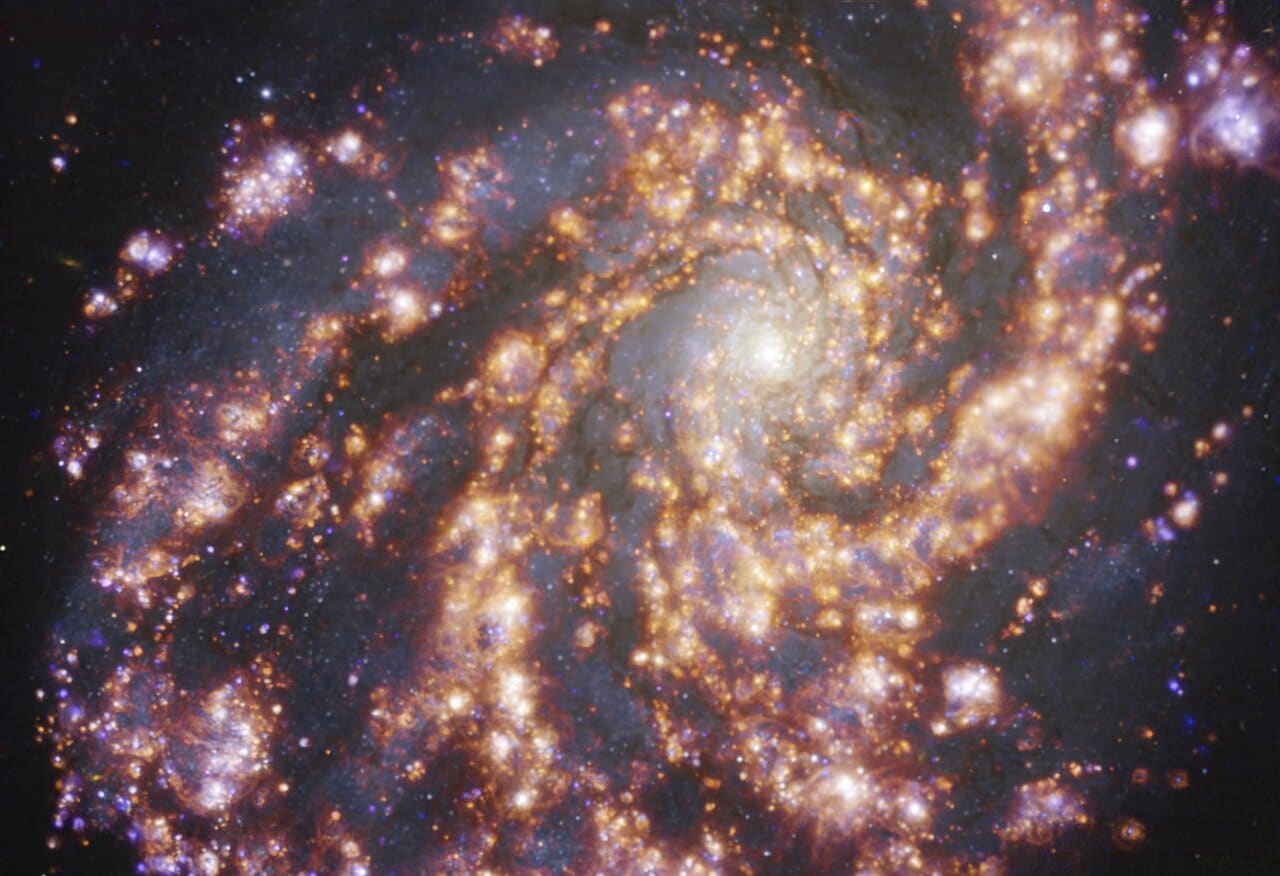
Spiral galaxy NGC 4254 was imaged earlier this year by the Multi-Unit Spectroscopic Explorer (MUSE) on ESO’s Very Large Telescope. This galaxy is located 45 million light-years away from Earth. The spiral arms give off a golden glow, which comes from the clouds of ionized hydrogen, oxygen and sulfur gas. This is where young stars are born.
#7 Supernova Remnant 1E 0102.2-7219

Over a thousand years ago, a massive star exploded in the Small Magellanic Cloud. The Small Magellanic Cloud is a neighboring galaxy. The remnant of the star was photographed this year by the Hubble Space Telescope and is in seventh place in the 2021 final list. Supernova remnant 1E 0102.2-7219 is 202,000 light-years from Earth and was only discovered in 1981.
#6 NGC 1300
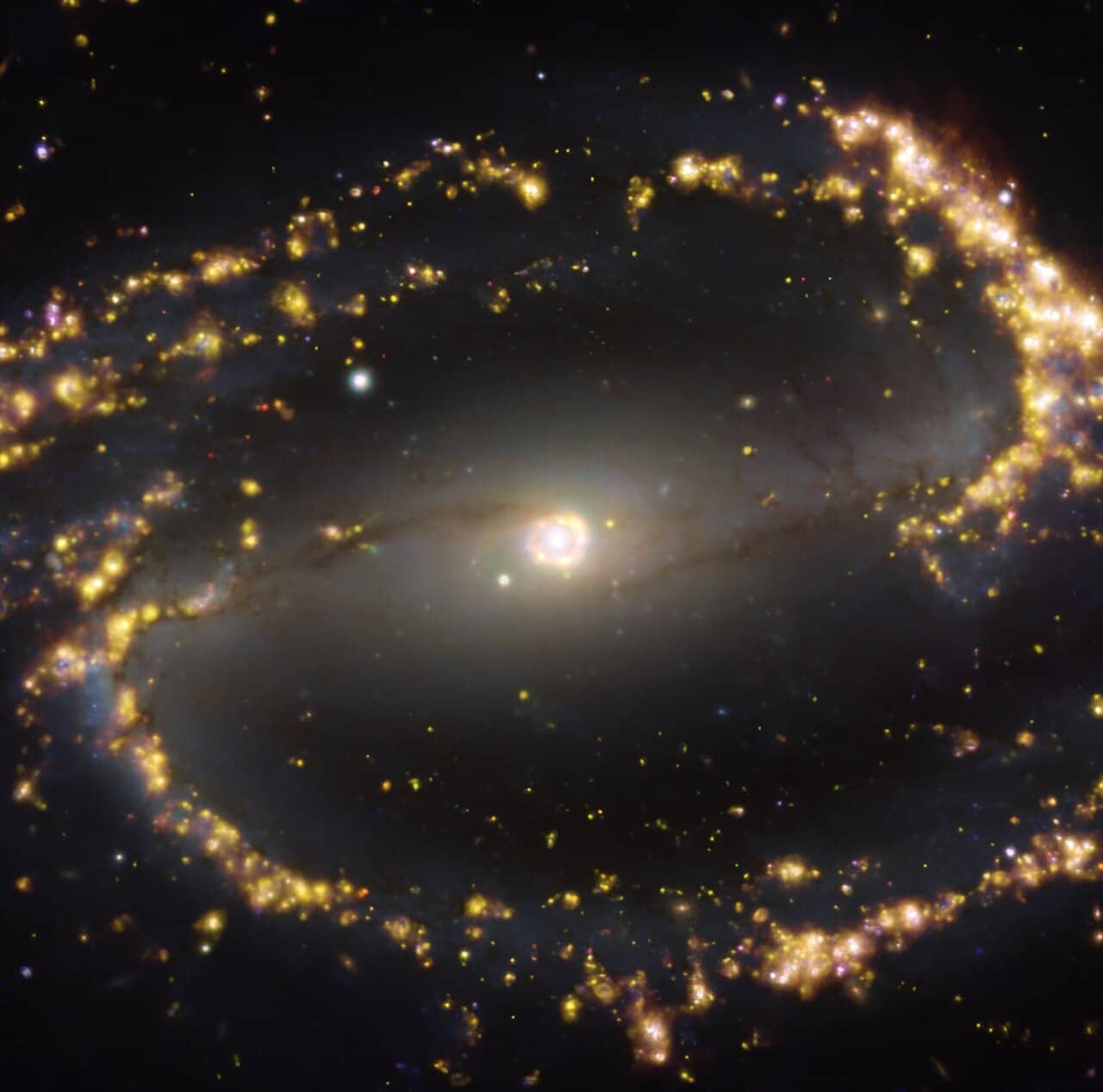
NGC 1300 is located 61 million light-years away. Above, recordings from MUSE and ALMA have been combined. The ALMA observations are mainly reflected in brownish-orange hues that reveal the presence of cold gas. MUSE is responsible for gold and blue hues, with the good glow indicating newborn stars and the blue hues representing older stars. Also check out other photos of galaxies.
#5 Center of our Milky Way

The US space agency released a special panorama of our galactic center this year. The center of the Milky Way is located 26,000 light-years from Earth. The cosmic masterpiece was created by combining data from South Africa’s MeerKAT radio telescope and NASA’s Chandra X-ray observatory. The mosaic is the result of 370 Chandra observations from 1999 to 2019. In total, it amounts to 1,555 hours and 26 minutes of observations, which amounts to more than 64 days. The center of our Milky Way galaxy is a cosmic web of hot gas and magnetic fields. with in the middle: a supermassive black hole.
#4 Jupiter in three wavelengths
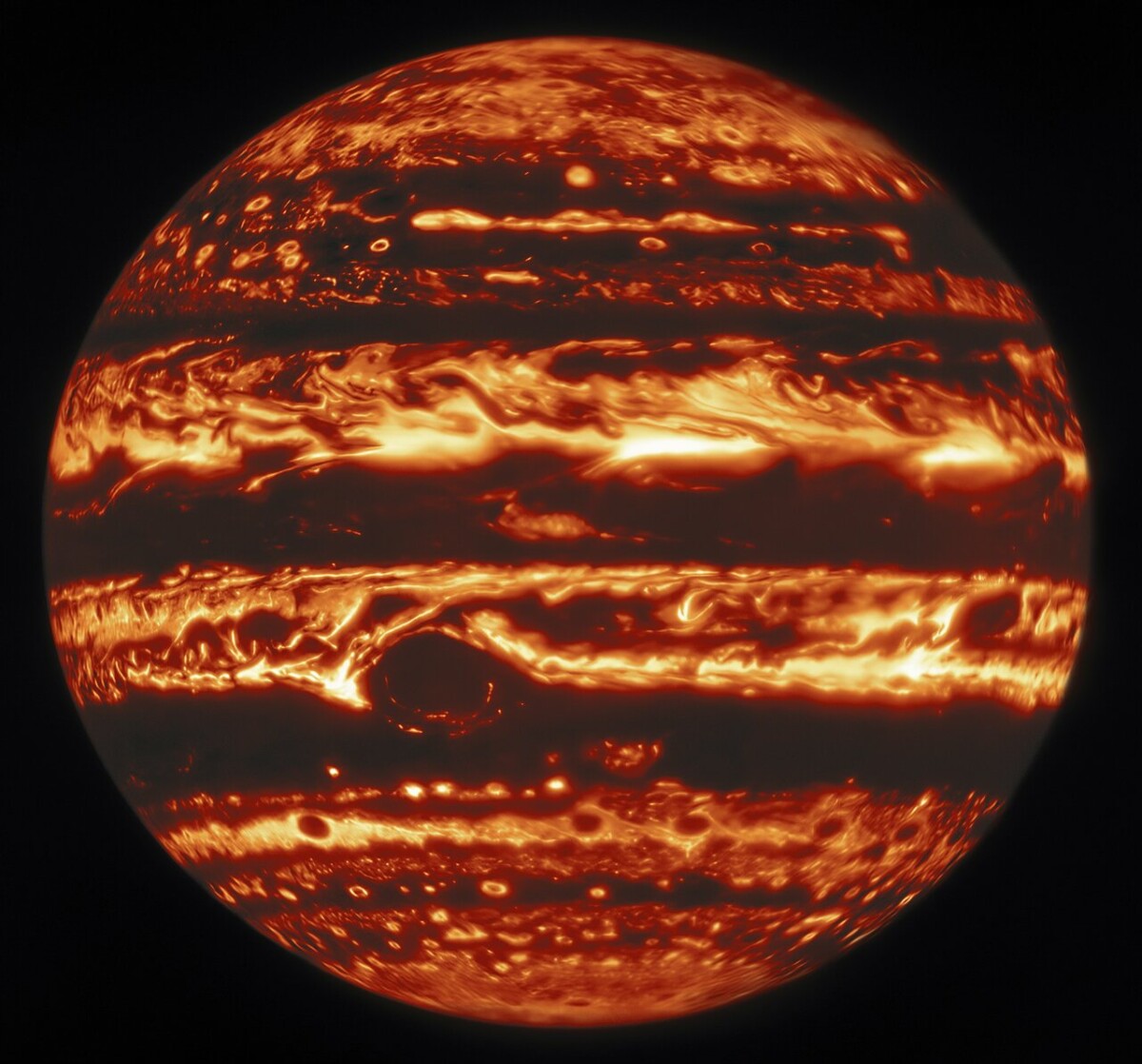
Scientists have released stunning new images of planet Jupiter. In the photos, the gas giant shines at three different wavelengths of light, giving us a unique insight into the turbulent atmosphere of the largest planet in our solar system. The visible and ultraviolet images were captured by Hubble’s Wide Field Camera 3, while Gemini North’s Near-InfraRed Imager (NIRI) instrument handled the infrared images. All photos were taken at exactly the same time.
#3 NGC 2276

The Hubble Space Telescope took a sharp image of NGC 2276 this year. At first glance, NGC 2276 looks like a beautiful spiral galaxy, but if you look closely, you can see elongated spiral arms and gigantic star-forming regions. This galaxy is 120 million light-years from Earth. Many stars are born in the spiral arms of the spiral galaxy.
#2 Star AG Carinae

Hubble celebrated his 31st birthday with this beautiful photo of AG Carinae. This is one of the brightest stars in our galaxy. Fragments of gas and dust, recently ejected from the star, are visible around the star. AG Carinae is only a few million years old, but will die soon. In comparison, our sun is much more efficient with its fuel and therefore has a lifespan of about ten billion years (of which 4.5 billion years have now passed).
The star is currently a so-called Bright Blue Variable. Such a hypergiant emits more than 100,000 times as much light per unit time as the sun. Scientists believe that AG Carinae will become a Wolf-Rayet star in the near future. Wolf-Rayet stars lose their mass due to strong stellar winds. They live very short and explode in a supernova or hypernova. In the end, a black hole will probably be left behind.
#1 Stellar Nursery AFGL 5180
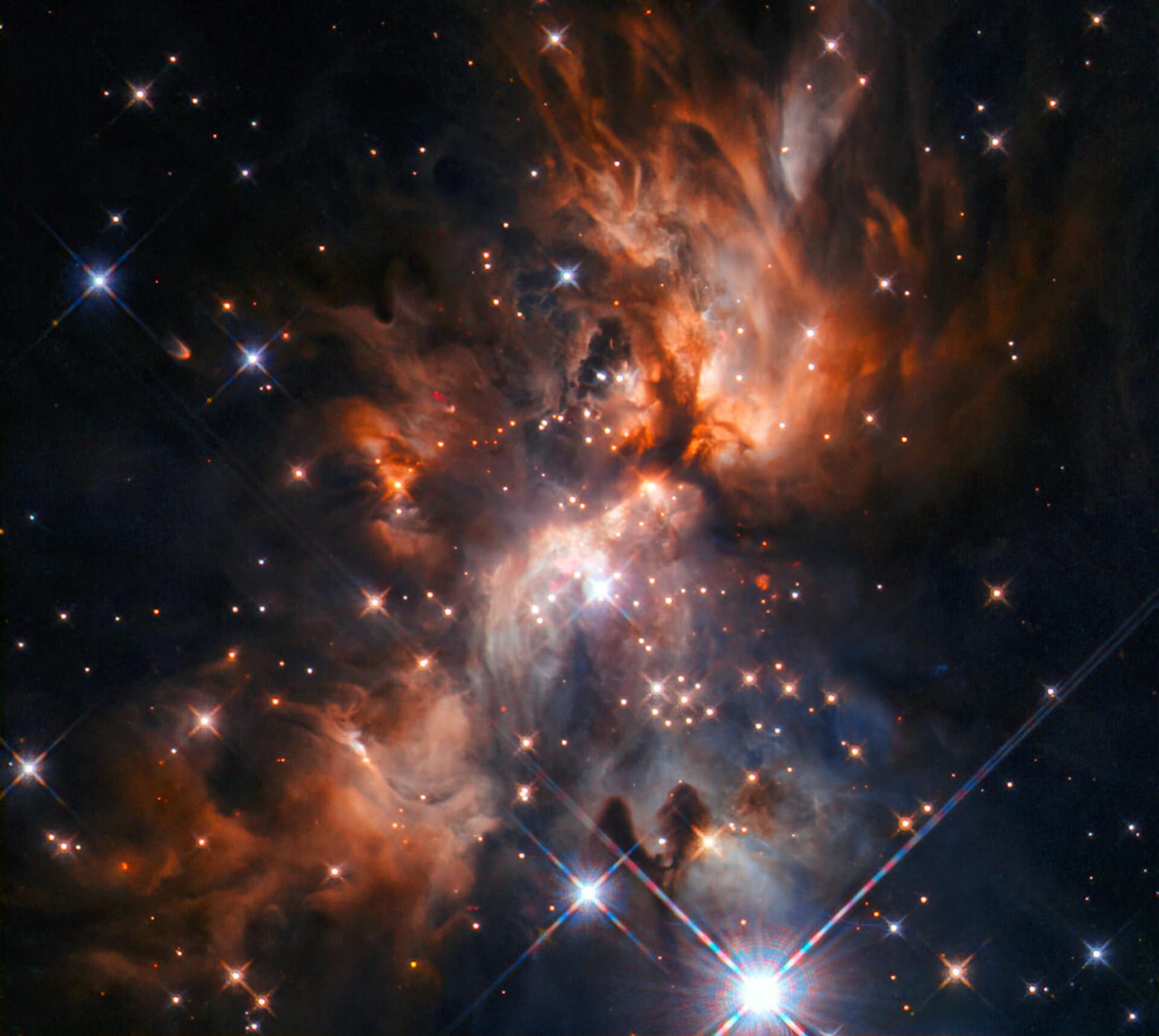
In this Hubble photo we see new stars being born. This stellar nursery is called AFGL 5180 and can be found in the constellation Gemini. Stars are formed by the contraction of gas clouds (nebulae) that can be several light years – the distance that light travels in a year – wide. The collapse occurs under the influence of its own weight and gravity. This process can take several hundred thousand years. Read here what the life of a star (from cradle to grave) looks like.
With an average score of 8.4, AFGL 5180 has been voted space photo of the year 2021. A wonderful achievement!